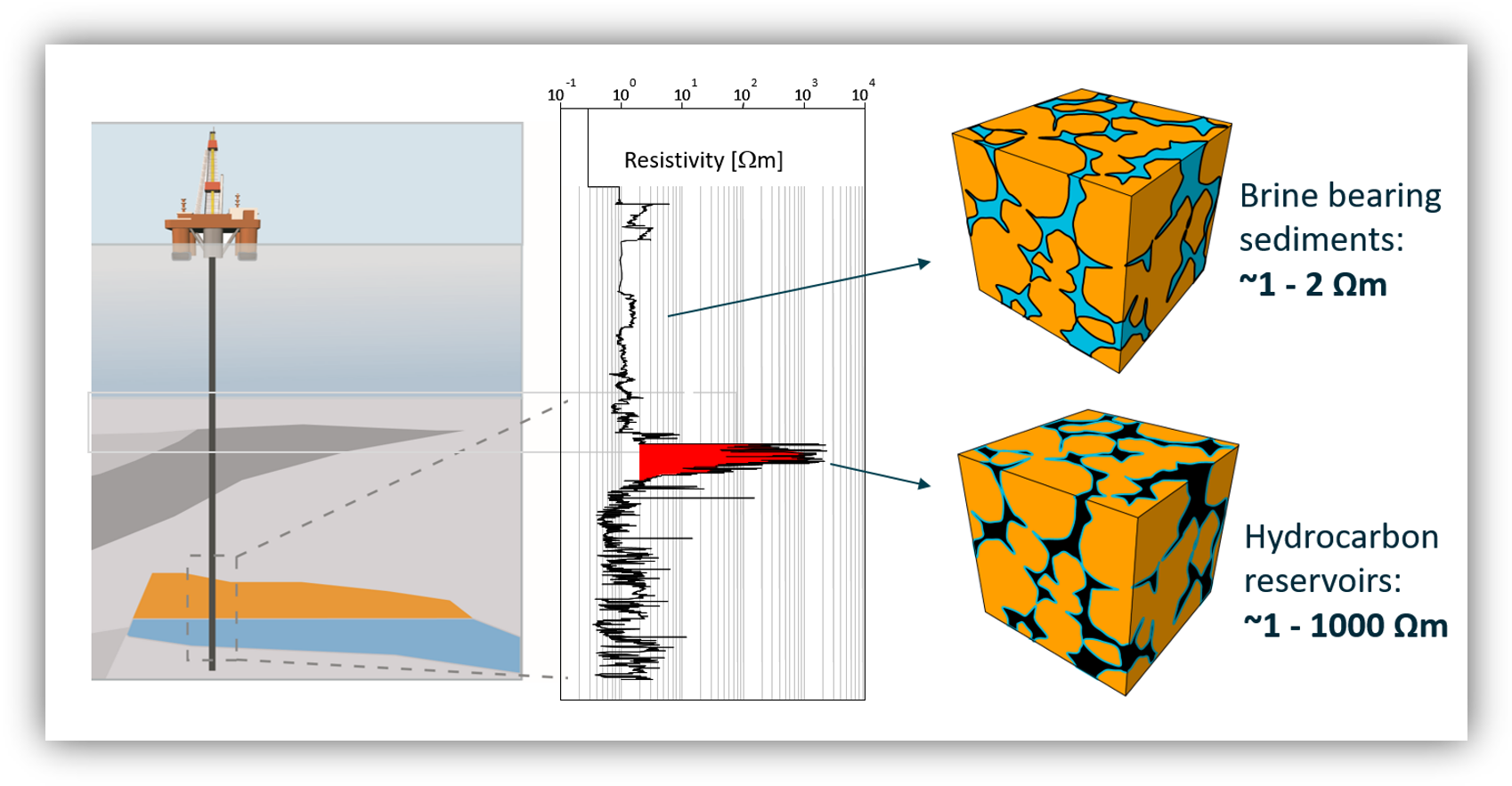A guide to marine EM
Measuring wellbore resistivity has been a fundamental formation evaluation tool since the 1920s.
Marine electromagnetic surveying uses the same principles to map resistivity variations in the subsurface. The resistivity of crystalline and volcanic rocks is dominated by the matrix resistivity, while the resistivity of sedimentary rocks is dominated by the porosity, tortuosity and the resistivity of the pore fluid.
Commercial oil & gas discoveries are predominantly highly resistive when contrasted to background.

Hydrocarbon filled sediments exhibit significantly higher resistivities than brine filled sediments and pose a resistivity anomaly that can be mapped using electromagnetic methods. Integrated with other types of geophysical data, such as well and seismic data, marine EM methods are powerful exploration tools.
